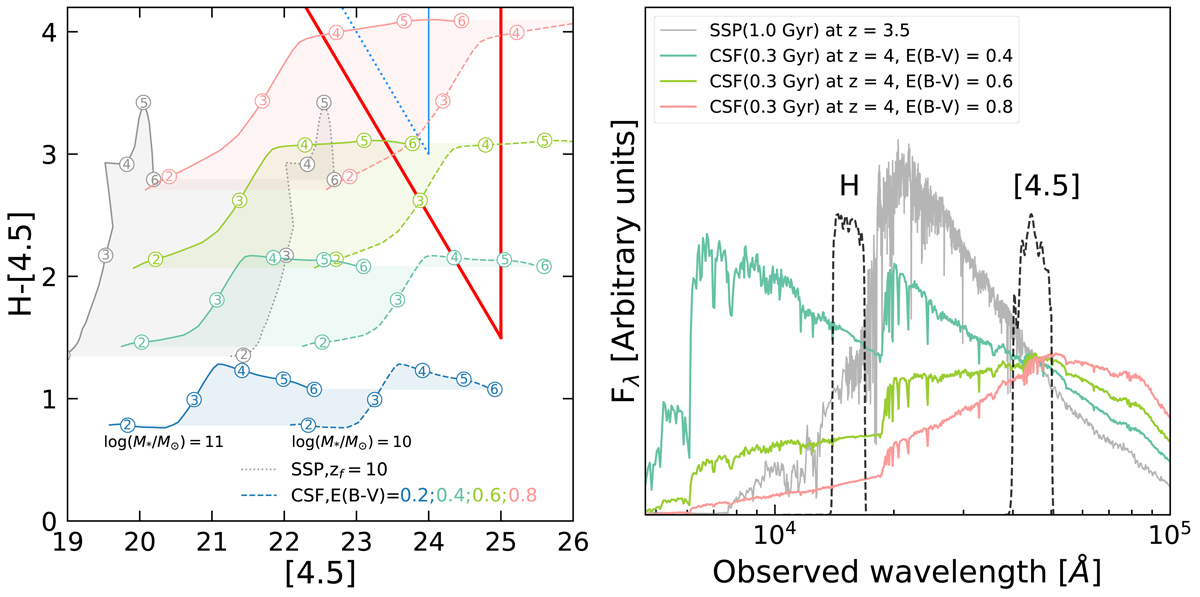Fig. 2.

Download original image
Selection criteria for OFGs at z ≳ 3. Left: color-magnitude diagram for the selection of OFGs. This diagram shows the evolutionary tracks of theoretical galaxy templates at z = 2 − 6, with stellar mass log(M⋆/M⊙) = 10 − 11 and solar metallicity. The numbers in the circles indicate the redshift. The solid and dashed evolutionary tracks correspond to stellar masses with log(M⋆/M⊙) = 11 and log(M⋆/M⊙) = 10, respectively. These templates are based on the BC03 models (Bruzual & Charlot 2003), including an instantaneous burst (i.e., simple stellar population; SSP) model formed at z = 10 (grey area) and a non-evolving constant star formation (CSF) model with an age of 300 Myr with varying degrees of reddening (blue, green, olive, and red areas). The SSP model corresponds to a passive or old galaxy with an age of 1 Gyr at z = 3.5. The blue triangular region shows the selection criteria for H-dropouts in Wang et al. (2019), i.e., no H-band flux above 5σ (H > 27 mag; blue dashed line) and [4.5] < 24 mag (blue solid line). The red triangular region shows the selection criteria for OFGs in this work. Right: different theoretical galaxy templates in HST/F160W (H-band) and IRAC 4.5 μm filters. The templates include a passive galaxy with an age of 1 Gyr at z = 3.5 and three star-forming galaxies with different degrees of reddening at z = 4. At a similar [4.5], the three star-forming galaxies with different dust extinction values exhibit different H-band magnitudes.
Current usage metrics show cumulative count of Article Views (full-text article views including HTML views, PDF and ePub downloads, according to the available data) and Abstracts Views on Vision4Press platform.
Data correspond to usage on the plateform after 2015. The current usage metrics is available 48-96 hours after online publication and is updated daily on week days.
Initial download of the metrics may take a while.


